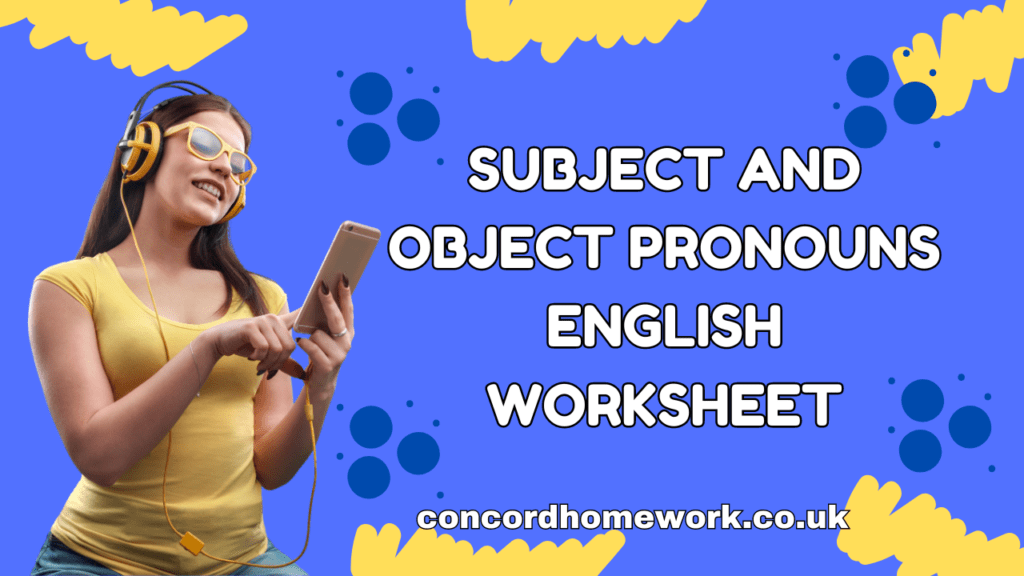Subject and object pronouns read and fill in the gaps.
This worksheet is about practicing the subject and object pronouns in English. Students read and complete the exercises. The worksheet has an answer key.
* Download This English Worksheet: “Subject and object pronouns English worksheet”.
Subject and Object Pronouns: A Comprehensive Guide
As a grammar expert, I’m delighted to provide a detailed explanation of subject and object pronouns. These essential pronouns play distinct roles in sentences. Let’s explore them in depth:
1. Subject Pronouns
Subject pronouns (also known as nominative pronouns) serve as the subjects of verbs. They represent the person or thing performing the action. Here’s a table illustrating subject pronouns:
| Subject Pronoun | Usage | Example Sentence |
|---|---|---|
| I | First person singular | “I love reading mystery novels.” |
| You | Second person (singular/plural) | “You are my best friend.” |
| He / She / It | Third person singular | “He plays the guitar beautifully.” / “She is an excellent chef.” / “It is raining outside.” |
| We | First person plural | “We enjoy hiking in the mountains.” |
| They | Third person plural | “They planted flowers in the garden.” |
2. Object Pronouns
Object pronouns (also called objective pronouns) function as the objects of verbs or prepositions. They represent the person or thing affected by an action. Here’s a table illustrating object pronouns:
| Object Pronoun | Usage | Example Sentence |
|---|---|---|
| Me | First person singular | “She invited me to the party.” |
| You | Second person (singular/plural) | “I’ll call you tomorrow.” |
| Him / Her / It | Third person singular | “I saw him at the concert.” / “She gave the book to her.” / “I found it on the shelf.” |
| Us | First person plural | “They included us in their plans.” |
| Them | Third person plural | “The teacher praised them for their hard work.” |
Common Mistakes to Avoid
- Confusing “I” and “Me”:
- Use “I” as the subject (e.g., “He and I went to the museum”).
- Use “Me” as the object (e.g., “She invited him and me to the party”).
- “Who” vs. “Whom”:
- “Who” is a subject pronoun (e.g., “Who is coming to the meeting?”).
- “Whom” is an object pronoun (e.g., “To whom should I address this letter?”).
What topics do you need?
“Thank you for taking the time to explore this topic with us! We hope you found the information helpful and insightful. Have any thoughts, questions, or additional examples to share? We’d love to hear from you in the comments below!
Don’t forget to spread the word by sharing this blog with your friends, family, and colleagues. Together, let’s continue to learn, grow, and connect with the world around us. Happy reading and sharing!”

